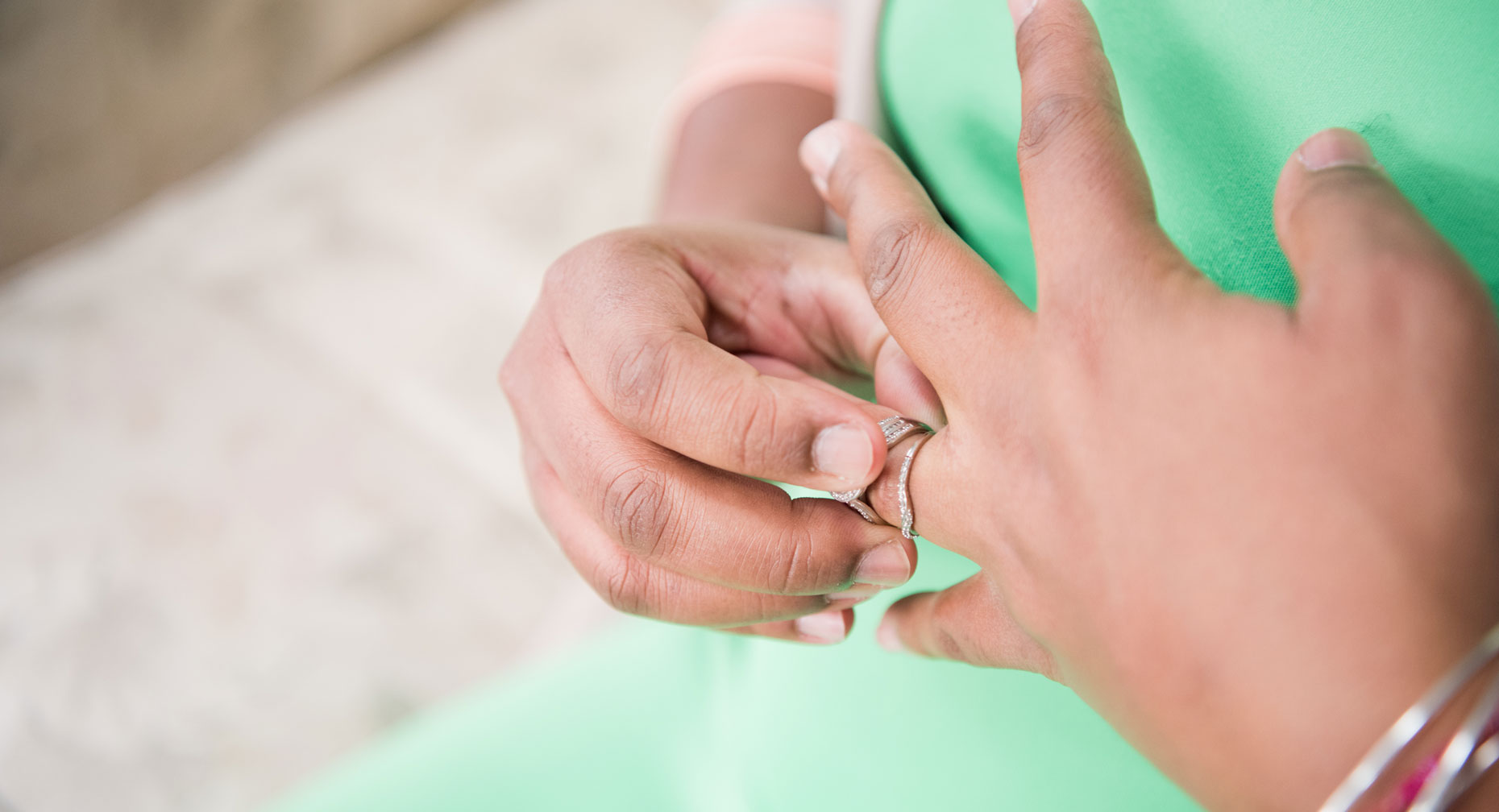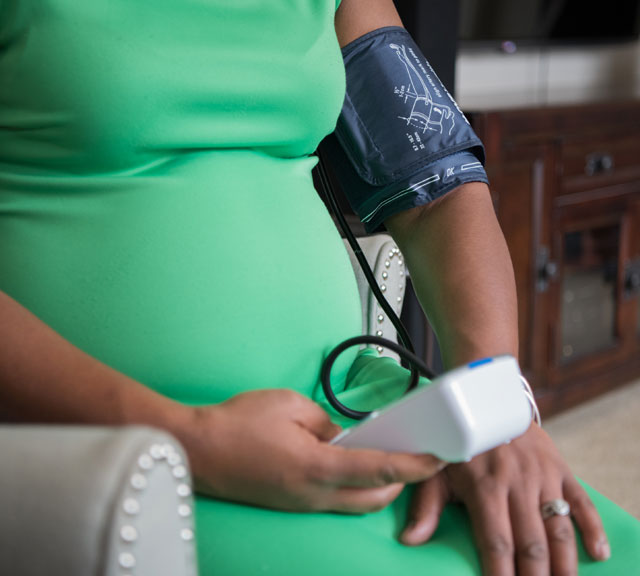Pre-eclampsia: Know the Signs

Answer a few questions and we'll provide you with a list of primary care providers that best fit your needs.
Pre-eclampsia is a condition of pregnancy that causes high blood pressure and other problems for mom. Women who develop pre-eclampsia are more likely to have a preterm birth or a baby with low birth weight. Women with pre-eclampsia are also at risk for serious complications such as seizures and liver damage.
The condition usually starts after the 20th week of pregnancy. The only known cure for pre-eclampsia is delivery of the baby.
“We don't fully understand what causes pre-eclampsia,” says David McKenna, MD, a maternal-fetal medicine specialist.
Luckily, doctors do know quite a bit about how to prevent and treat the condition.
By recognizing the signs of pre-eclampsia early, your doctor can treat your symptoms and closely monitor your condition and your baby’s development so that you can deliver a healthy baby.
Signs And Symptoms
Pre-eclampsia is also called toxemia. The high blood pressure problems associated with pre-eclampsia occur in 6 to 8 percent of all pregnancies in the U.S. About 70 percent of those cases are first-time pregnancies, says the National Heart Lung and Blood Institute (NHLBI).
Pre-eclampsia affects the placenta, and it can affect the mother's kidney, liver and brain. It can cause various symptoms that range from mild to severe, including:
- High blood pressure
- Swelling of hands and face
- Too much protein in urine
- Stomach pain
- Blurred vision
- Dizziness
- Headaches
- Seizures
If symptoms appear suddenly or are severe, you should call your doctor right away. Talk with your doctor about what you need to know to understand pre-eclampsia because symptoms can change or worsen throughout your pregnancy.
When seizures occur, the condition is called eclampsia. Eclampsia is the second leading cause of maternal death in the U.S., says the NHLBI.
Are You At Risk?
Some women may be more at risk for pre-eclampsia than others.
Recent studies suggest that the heavier a woman is before she becomes pregnant, the greater her risk of a range of pregnancy complications, including pre-eclampsia.
You may be able to lower your risk of pre-eclampsia by addressing existing lifestyle and health issues, such as asthma, being overweight and chronic high blood pressure, before you become pregnant.
“The best thing we can do is identify it early and assess how fast it is progressing,” Dr. McKenna says.
Women who are more likely to develop pre-eclampsia tend to have one or more of the following conditions
- Chronic hypertension (high blood pressure before becoming pregnant)
- High blood pressure or pre-eclampsia during a previous pregnancy
- Obesity or overweight prior to pregnancy
- Pregnancy under the age of 20 or over the age of 40
- Pregnant with more than one baby
- Diabetes, kidney disease, rheumatoid arthritis, lupus, or scleroderma
Treatment Can Avoid Serious Complications
If you’re diagnosed with high blood pressure or pre-eclampsia during your pregnancy, it’s important to get treatment and monitor your health and the health of your baby. Continuing treatment after pregnancy also is important.
High blood pressure and pre-eclampsia are associated with serious complications such as: gestational diabetes, damage to the liver and blood cells, and a separation of the placenta from the wall of the uterus.
Maternal-fetal medicine specialist Jiri Sonek, MD, describes the effects pre-eclampsia can have on mom and her baby.
Click play to watch the video or read video transcript.
Your doctor will work to avoid these conditions through different pre-eclampsia treatments, including:
- Medicine to lower blood pressure
- Magnesium sulfate to prevent seizures
- One or two baby aspirin taken daily, started early in pregnancy (before 16 weeks) to help prevent the development of preeclampsia
- Administration of steroids to promote baby’s lung development (in case early delivery is needed)
- Hospitalization
- Bed rest
- Close monitoring of both baby and mom
- Early delivery of baby
For moms with pre-eclampsia, Cesarean section deliveries are more common because they put less stress on the baby. However, Dr. McKenna says that vaginal deliveries are often possible.
 Improved Outcomes
Improved Outcomes
What we know about pre-eclampsia continues to improve.
An effective screening test is now available to determine if an expectant mom is at risk of developing pre-eclampsia during her pregnancy.
Dr. Sonek explains the test and when it should be conducted:
Click play to watch the video or read video transcript.
Click play to watch the video or read video transcript.
Although doctors can diagnose and treat pre-eclampsia earlier in a pregnancy, modern medicine is still unable to prevent the condition.
“The best thing we can do is identify it early and assess how fast it is progressing,” Dr. McKenna says. “Sometimes we can keep mom pregnant for weeks to allow the baby to mature and grow and have a better outcome.”
Women diagnosed with pre-eclampsia during a pregnancy may be at higher risk for heart disease later in life, says Dr. McKenna.
“It definitely affects them,” Dr. McKenna says. “It’s important for women to mention their pre-eclampsia to their primary care doctor or cardiologist so that they can monitor their heart health.”
Answer a few questions and we'll provide you with a list of primary care providers that best fit your needs.
Source: Interstitial Cystitis Association; Urology Care Foundation; National Institutes of Health; Jiri Sonek, MD, Perinatal Partners; David McKenna, MD, Perinatal Partners









